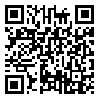BibTeX | RIS | EndNote | Medlars | ProCite | Reference Manager | RefWorks
Send citation to:
URL: http://tumj.tums.ac.ir/article-1-681-en.html
Background: Ultrasound (US) has been used in neuroprotection after cerebral ischemia, however the mechanism of action remains unclearly. We have previously shown the protective effect of ultrasound on infarction volume and brain edema in ischemic brain injured at normothermic condition. Ultrasound may also amplify the effect of fibrinolytic medications in thrombolysis process .We have also shown that hyperthermia can exacerbate cerebral ischemic injury and that the efficacy of tissue plasminogen activator (tPA) is reduced in the presence of hyperthermia. In this study, the effects of US alone or in combination with tPA on brain ischemic injury were evaluated.
Methods: Focal ischemic brain injury was induced by emblazing a pre-formed clot into the middle cerebral artery in rats. Principally, we examined whether US can reduce the perfusion deficits and, the damage of blood- brain barrier (BBB) in the ischemic injured brain. There are two series of experiments at this study .in the first series, animals were randomly assigned to four groups (n=7 per group) as follows: 1-control (saline), 2-US (1W/cm2, 10 duty cycle ), 3- US+high- tPA (1W/cm2, 10 duty cycle +20 mg/kg) and 4- high -tPA (20 mg/kg). We also examined the effects of US and tPA on BBB integrity after ischemic injury. The animals were assigned into four groups (n=7 per group), treatment is the same as above. BBB permeability was assessed by the Evans blue (EB) extravasations method at 8 h after MCA occlusion. BBB permeability was evaluated by fluorescent detection of extravagated Evans blue dye and Perfusion deficits were analyzed using an Evans blue staining procedure. The perfused microvessels in the brain were visualized using fluorescent microscopy. Areas of perfusion deficits in the brain were traced, calculated and expressed in mm2.
Results: The results showed that US improved neurological deficits significantly (p<0.05). The administration of US significantly decreased perfusion deficits and BBB permeability. In the control set, for the US+high tPA, high tPA only and US only groups, the mean perfusion deficits (±SD) were 14.32±3.15, 7.03±4.08, 5.92±1.90 and 9.14±3.37 mm2, respectively, 8 h after MCA occlusion (P<0.05).
Conclusions: These studies suggest that US is protective in a rat embolic model of stroke due to decreased perfusion deficits.
| Rights and permissions | |
 |
This work is licensed under a Creative Commons Attribution-NonCommercial 4.0 International License. |





